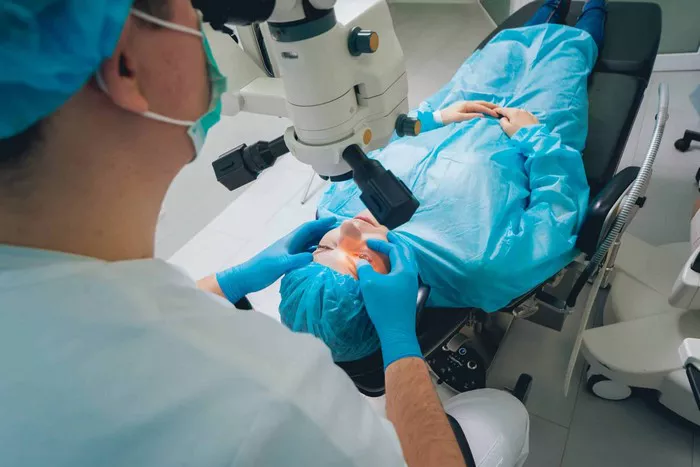Dry eyes can be a persistent and uncomfortable condition. For many, it affects daily life and can lead to significant distress. While non-surgical treatments such as artificial tears and lifestyle changes can be effective, surgery may be considered for more severe cases. This article explores the surgical options available for managing dry eyes, providing a comprehensive overview of their effectiveness, risks, and benefits.
Understanding Dry Eyes
Dry eyes occur when the eyes do not produce enough tears or when the tears evaporate too quickly. This condition can lead to symptoms such as:
- Burning or stinging sensation
- Redness
- Sensitivity to light
- Blurry vision
- Difficulty wearing contact lenses
Dry eyes can be caused by various factors, including:
- Aging
- Hormonal changes
- Environmental conditions
- Certain medications
- Medical conditions such as Sjögren’s syndrome or rheumatoid arthritis
Non-Surgical Treatments for Dry Eyes
Before considering surgical options, it is essential to explore non-surgical treatments, which often include:
Artificial Tears: Over-the-counter lubricating eye drops can provide temporary relief.
Prescription Eye Drops: Medications such as cyclosporine A (Restasis) or lifitegrast (Xiidra) can help increase tear production.Punctal Plugs: These small devices are inserted into the tear ducts to reduce tear drainage.
Lifestyle Changes: Adjustments such as using a humidifier, avoiding smoke, and taking breaks during prolonged screen use can help manage symptoms.
See Also: Which Laser Eye Surgery is Best for Astigmatism?
Surgical Options for Dry Eyes
When non-surgical treatments are insufficient, surgical interventions may be considered. The main surgical options include:
1. Punctal Plugs
Punctal plugs are one of the most common procedures for dry eyes. They are small, biocompatible devices inserted into the tear ducts to block the drainage of tears, thus increasing the amount of moisture on the eye’s surface.
Procedure:
- The procedure is typically done in a doctor’s office.
- Local anesthesia may be used.
- The plugs are inserted into the tear ducts, where they help retain tears on the eye.
Types of Punctal Plugs:
Temporary Plugs: Made of dissolvable material and are used to assess the effectiveness of the treatment.
Permanent Plugs: Made of silicone or other materials and designed for long-term use.
Benefits:
- Non-invasive
- Can provide immediate relief
- Adjustable or removable if necessary
Risks:
- Infection
- Discomfort
- Possible migration or expulsion of the plugs
2. Thermal Pulsation Therapy
Thermal pulsation therapy is a procedure that targets the meibomian glands, which produce the oily layer of tears. This method uses heat and pressure to unclog these glands, improving the quality of tears.
Procedure:
- A device applies gentle heat and pressure to the eyelids.
- The treatment typically lasts around 12 minutes per eye.
Benefits:
- Can provide long-lasting relief
- Non-invasive
- May improve the overall quality of tears
Risks:
- Temporary discomfort
- Risk of infection or inflammation
3. LipiFlow
LipiFlow is a specialized device used to treat meibomian gland dysfunction (MGD). It combines thermal energy and pulsatile pressure to stimulate and unclog the glands.
Procedure:
- The device is placed on the eyelids and delivers controlled heat and pressure.
- The treatment typically takes about 12 minutes per eye.
Benefits:
- Effective for patients with MGD
- Non-surgical
- Can provide significant improvement in symptoms
Risks:
- Discomfort during the procedure
- Potential for temporary irritation
4. Autologous Serum Eye Drops
Autologous serum eye drops are derived from the patient’s own blood and used to treat severe dry eyes by providing natural growth factors and nutrients.
Procedure:
- Blood is drawn from the patient and processed to create serum eye drops.
- The drops are applied to the eyes.
Benefits:
- Uses natural components to promote healing
- Effective for severe cases
Risks:
- Requires multiple visits to the clinic
- May not be covered by insurance
5. Amniotic Membrane Transplant
Amniotic membrane transplant involves placing a piece of amniotic membrane on the eye to promote healing and reduce inflammation.
Procedure:
- A small piece of amniotic membrane is surgically placed on the affected eye.
- The membrane supports healing and reduces inflammation.
Benefits:
- Can promote healing in severe cases
- Reduces inflammation
Risks:
- Surgical risks
- Potential for graft rejection
Post-Surgical Care and Considerations
After undergoing surgery for dry eyes, it is essential to follow post-operative care instructions carefully. This may include:
- Using prescribed medications or eye drops
- Avoiding rubbing or touching the eyes
- Attending follow-up appointments
- Protecting the eyes from irritants and environmental factors
Long-Term Management: Even after surgery, ongoing management of dry eyes may be necessary. This can include:
- Regular use of artificial tears
- Continued use of punctal plugs if applicable
- Regular check-ups with an eye care specialist
Conclusion
Surgical options for dry eyes can provide significant relief for those who do not respond to non-surgical treatments. From punctal plugs to advanced therapies like LipiFlow and autologous serum eye drops, these procedures offer various benefits tailored to individual needs. However, each option carries potential risks and requires careful consideration and consultation with a medical professional.
Patients should weigh the benefits and risks of surgical interventions and work closely with their eye care provider to determine the most appropriate treatment plan. With proper management and care, many individuals can achieve significant improvement in their dry eye symptoms and enhance their overall quality of life.
Related topics:

